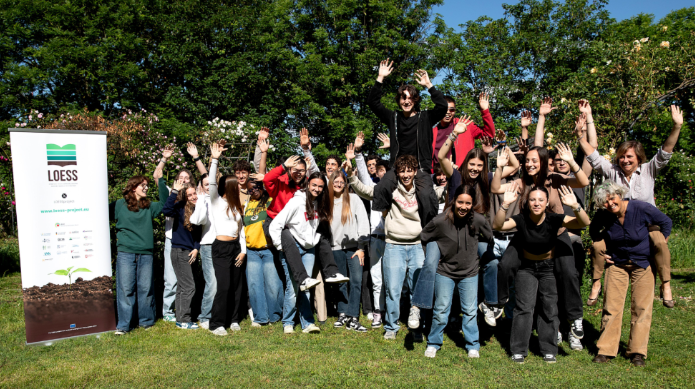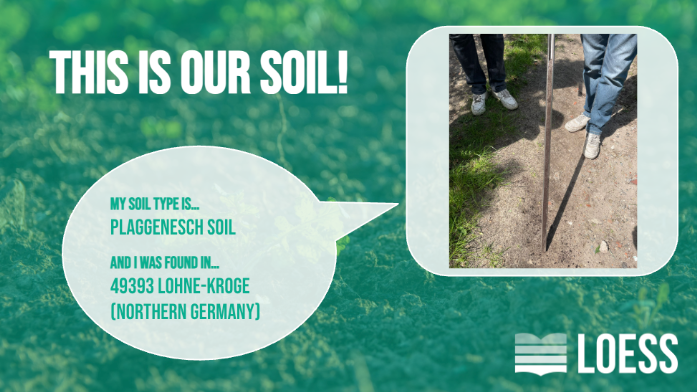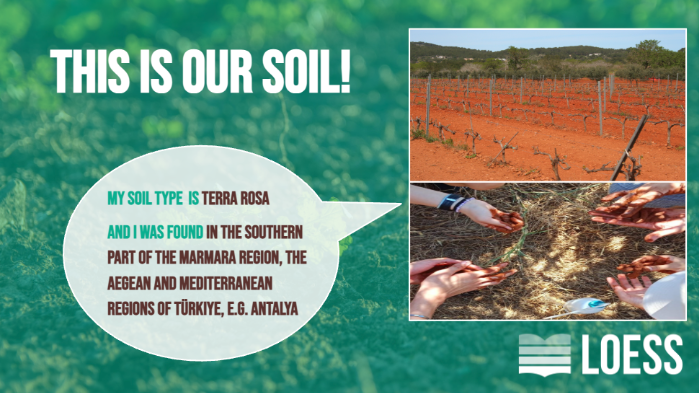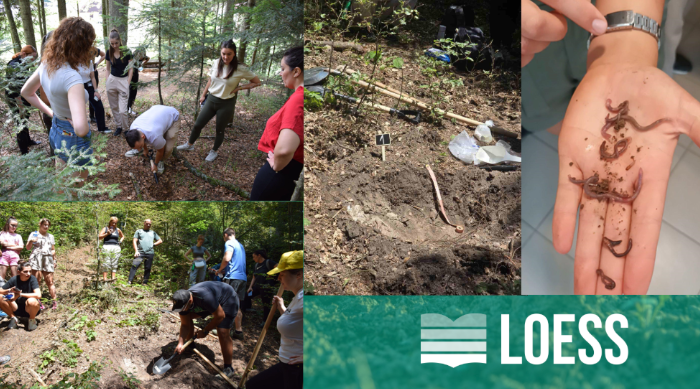LOESS International Online Summer Camp: Students share visions for Europe’s soils
From Germany to Türkiye, Italy to Serbia, students who had spent their summer digging into soils in their home countries came together on 24 September 2025 – this time online – for the LOESS International Summer Camp. The meeting was a chance to share what they had learned at their national soil camps, reflect on challenges, and discuss a shared vision for Europe’s soils.

Students at the Italian national soil camp. Photo credit: Mathieu Goradesky.
Insights from Science-for-Policy experts
As an ice-breaker, the camp started with a Kahoot quiz, designed to share interesting facts about soil-related issues in the participating countries. The focus then shifted to the bigger picture, with introductions from two guest experts, who provided perspectives on how soil connects to European and national policymaking:
Karen Fabbri, Deputy Head of Unit for Science for Policy, Advice & Ethics at the European Commission, explained the EU’s policy cycle: from design, impact assessment, and transposition into national law, through to implementation and monitoring. She highlighted the role of evidence in shaping decisions, Science Advice Mechanism that brings research to the College of Commissioners, and how Living labs are increasingly important in testing and co-developing sustainable solutions.
Dr David Butler Manning, representing the German Federal Ministry of Food and Agriculture (BMEL), described how ministries like his work with soil. He illustrated this through examples such as Germany’s National CAP Strategic Plan and initiatives to support sustainable farming. He also explained the ministry’s broader tasks: coordinating policy fields, implementing government priorities, overseeing research institutes, and engaging in international cooperation. His message underscored that soils are embedded across multiple policy areas, from farming strategies to climate targets.
Student Spotlights: Local soils and challenges
At the heart of the summer camp were the student presentations on learnings and highlights from their participation in the four national soil camps. From olive groves in Turkey to peatlands in Germany, agricultural landscapes in Italy, and forests in Serbia, students showcased the soils that shape their regions and the challenges they face.
Germany (University of Vechta, undergraduates in Education/Geography): Students explored Plaggenesch soils, a cultural soil type shaped by centuries of land use. They highlighted threats such as humus loss, nitrate pollution, monocultures, peatland drainage, sealing and erosion, as well as climate impacts. Their call: sustainable practices, soil conservation, and education to safeguard soils that act as nutrient reservoirs, carbon stores, and cultural archives.

Presentation of the German soil profile
Italy (high school students from the “G. Garibaldi” Agricultural Technical Institute and the “L. Da Vinci” Technical Institute for Surveyors): The presentations highlighted four soil profiles – agricultural, riverine, hilly woodland and urban – that characterise the Emilia Romagna region, and the regional challenges related to mitigating the effects of extreme weather events, loss of soil fertility and loss of biodiversity caused by human activities, The students emphasized the importance of soil literacy in schools and the role of young people in promoting sustainable practices.
Türkiye (students from Tokat Gaziosmanpaşa VET High School and agriculture undergraduates at Akdeniz University): In Antalya, students studied Terra Rossa soils, vital for olives, grapes, and citrus, but threatened by erosion, urbanisation, deforestation, overgrazing, and pollution. They identified three top challenges: erosion and desertification, salinisation, and loss of organic matter, stressing solutions from reforestation to sustainable irrigation and organic farming.

Presentation of the Turkish soil profile
Serbia (University of Belgrade, Faculty of Forestry undergraduates): At Goč Mountain, students explored forest soils and their role in ecosystem health and biodiversity. They debated approaches to soil remediation and identified challenges such as overuse of chemicals, erosion from deforestation, loss of organic matter, waste and contamination, and lack of local knowledge.
After the student spotlights, the guest experts offered their reflections, asked questions, and highlighted how the issues raised connect to broader policy processes at both national and European levels.
Imagining Europe’s soil future
In breakout discussions, students were invited to look ahead and ‘Imagine it’s the year 2050 and Europe’s soils are thriving again — what did we do differently to get there?’ This forward-looking exercise encouraged students to think broadly – about farming practices, education, technology, policy, and community action – and how today’s choices could shape the long-term health of Europe’s soils.
The students’ visions included:
Education: starting soil literacy in kindergartens, training farmers, and using informal education.
Farming practices: reducing chemical inputs, adopting precision farming, improving irrigation, and ending harmful practices like burning crop residues.
Policy change: smarter subsidies, better laws, and governments that prioritise soils.
Community action: local activism, awareness-raising, and rethinking how soils are valued.
Landscapes and design: unsealing urban soils, diversifying agricultural landscapes, and protecting organic matter.
Technology and energy: careful use of innovations, attention to irrigation energy demands, and restraint in applying AI.

Photo collage from the Serbian national summer camp. Photo credit: CPN
A shared mission
The event closed with final reflections from the guest experts, who encouraged the students to continue as soil health ambassadors. While the meeting was held online, the exchange of ideas across borders made clear that Europe’s next generation of soil stewards share a deep sense of responsibility, and creativity, for shaping healthier soils.
